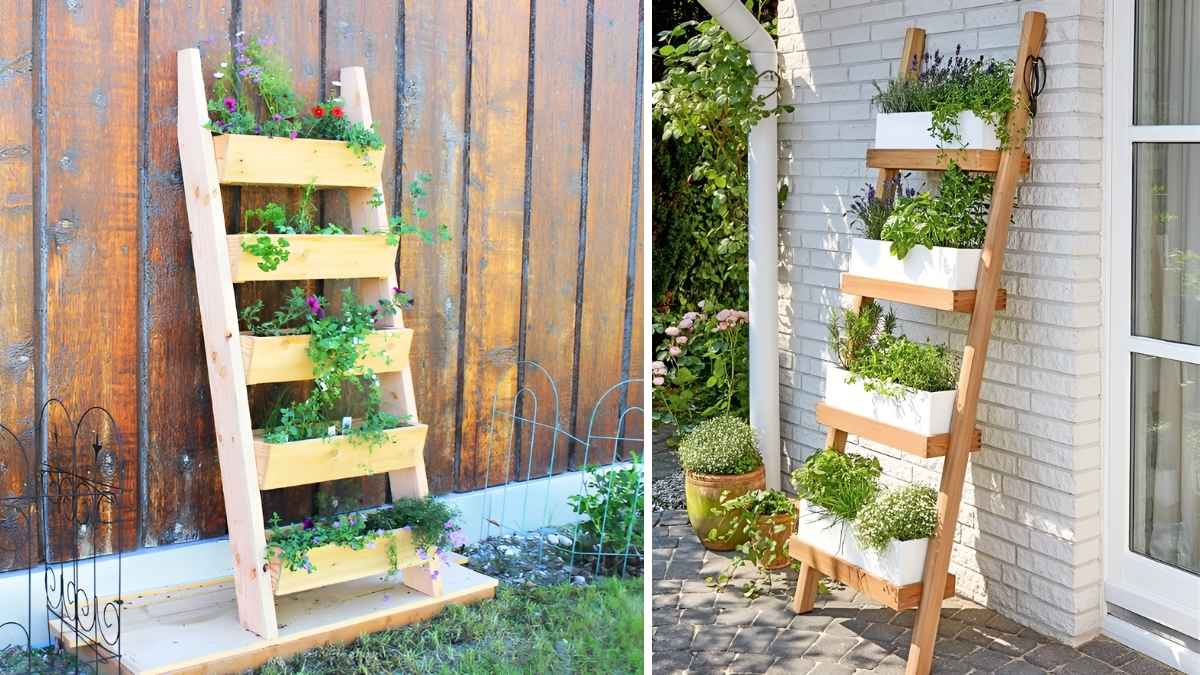Join on WhatsApp
Get the latest updates directly on WhatsApp – motivation, news & more!
Living in a city has many perks access to culture, community, and convenience but space often comes at a premium. For urban dwellers with a green thumb, the lack of garden space can feel limiting. The good news is, with a little creativity and some smart planning, you can grow a thriving garden without a backyard. Vertical gardening is the perfect solution for small balconies, patios, rooftops, and even indoor spaces. It’s space-saving, functional, and surprisingly easy to set up.
If you’re looking to bring more greenery into your urban environment, these vertical gardening hacks will help you transform tight corners and blank walls into lush, living spaces.
Start With a Strong Structure
Before you begin planting, think vertically literally. The success of your vertical garden often depends on the structure you use to support it. You can buy purpose-built vertical garden frames, but you don’t need anything fancy to start. Wooden pallets, trellises, ladders, bookshelves, or even an old shoe organizer can serve as excellent backbones for your garden.
The key is to ensure your structure is stable, secure, and able to bear the weight of soil-filled containers and growing plants. If you’re working indoors or on a balcony, make sure it fits your space and doesn’t obstruct walkways or natural light.
Choose the Right Plants for Your Setup
Not all plants are suitable for vertical gardening. In small urban spaces, you want plants that are lightweight, compact, and suited to container growing. Herbs like basil, thyme, mint, and parsley are perfect for vertical gardens. Leafy greens such as spinach, kale, and lettuce also work well and are surprisingly productive in small spaces.
Trailing plants like strawberries or cherry tomatoes can cascade over the edges of containers, adding visual interest and making the most of your vertical layout. For indoor spaces, consider pothos, philodendrons, or even small varieties of ferns. Matching the plant to the environment is the key to a successful setup.
Make Use of Walls and Railings
One of the easiest ways to start vertical gardening is to take advantage of what you already have. Walls, fences, and railings provide natural support for vertical structures. Wall-mounted planters or hanging pots can transform a bare wall into a green focal point.
If you have a balcony, attach railing planters on the outside edge to maximize internal space. You can also install a mesh grid or vertical wire panel along a wall to hang small pots using hooks or clips. It’s a minimalist solution that looks modern and doesn’t take up floor space.
Recycle and Repurpose Materials
One of the best things about vertical gardening is that it encourages resourcefulness. Many everyday items can be transformed into planters with just a little effort. Old plastic bottles can be cut and hung in rows, while tin cans, mason jars, or even broken drawers can become unique planting containers.
Consider using a shoe organizer with deep pockets for a quick and affordable herb wall. Just hang it on a sunny wall, fill the pockets with soil, and plant your herbs. Not only does this save space, but it also adds a touch of personality to your gardening area.
Stack Planters for a Tiered Effect
Stacking planters or containers is a clever way to go vertical without needing a full wall installation. You can find tiered plant stands or create your own by placing smaller pots on top of larger ones. Use shelves or crates to build height and give each plant the light it needs.
Stackable planters are also great for growing vegetables like peppers or radishes in tight quarters. Some modular planters are specifically designed to snap together vertically, making them easy to assemble and move if needed.
Use Hanging Baskets Creatively
Hanging baskets are typically associated with flowers, but they can be a powerful tool in your vertical garden. Suspend baskets from ceiling hooks, balcony rails, or overhangs to create a layered garden that doesn’t use up precious floor space.
Try growing herbs, strawberries, or even dwarf tomato plants in hanging baskets. Just ensure that whatever structure you hang them from can support the weight and that the plants get adequate sun exposure.
Focus on Light and Watering
In small urban gardens, getting enough sunlight is often a challenge. Track how the light moves through your space during the day and position your plants accordingly. Plants grown vertically may shade each other if stacked too closely, so be mindful of placement and plant height.
Watering can also be tricky in vertical systems. Gravity pulls water downward, so upper pots may dry out faster while lower ones can get over-saturated. Consider using self-watering containers or installing a drip irrigation system if you’re working with a larger wall of plants. If you’re hand-watering, check each plant regularly to make sure it’s getting the moisture it needs.
Think Beyond the Outdoors
Vertical gardening isn’t limited to balconies or patios. Indoor vertical gardens can brighten your home, improve air quality, and even act as natural room dividers. Living wall systems, wall-mounted planters, and vertical herb gardens in the kitchen are great ways to bring greenery indoors.
Even a simple setup like a ladder shelf with potted plants or a pegboard with small hanging containers can make a big difference in a small apartment. Just be sure to choose plants that tolerate indoor conditions, such as pothos, snake plants, or philodendrons.
Rotate and Refresh Your Garden
One of the benefits of vertical gardening is how easy it is to update and refresh. Unlike a traditional garden bed, vertical setups can be rearranged and replanted without too much effort. Switch out plants based on season, experiment with new varieties, or move sun-loving plants to different positions to optimize growth.
This flexibility allows you to keep things interesting throughout the year. You can rotate in flowering plants for visual interest, or replant with seasonal herbs and vegetables to keep your vertical garden productive year-round.
Maximize Every Inch
In a small space, every inch counts. Look up, look down, and don’t overlook awkward corners or narrow ledges. The back of a door, the side of a bookshelf, or an empty wall in the kitchen can all become opportunities for vertical gardening.
Using mirrors behind plants can reflect light and make the space feel larger and brighter. Incorporate trailing plants to soften hard edges and add depth to flat surfaces. With a bit of experimentation, you can create a garden that feels lush and expansive even in the tiniest of spaces.
Conclusion
Vertical gardening is more than just a space-saving trick it’s a creative and rewarding way to bring nature into urban life. With a few smart hacks and a little imagination, you can transform blank walls, unused corners, and cramped balconies into vibrant, living displays.
Whether you’re growing herbs for your kitchen, flowers for beauty, or greens for your plate, vertical gardening puts the power of nature right within reach. In the city, where every square inch matters, growing up is often the smartest way to grow at all.




